Abstract
Escherichia coli incubated in balanced salt solution with glucose as a carbon source but no nitrogen source exhibit a marked step-up of macromolecular synthesis when various non-bactericidal tissue extracts, or fractions thereof, are added. When disrupted granulocytes that cause rapid loss of viability are added, a step-up is also observed; i.e., incorporation of labeled precursors into ribonucleic acid is stimulated more than 15-fold, and incorporation into protein and deoxyribonucleic acid about twofold. This stimulation of macromolecular synthesis is still evident 30 min after more than 95% of the E. coli have lost their ability to multiply. Stimulation by disrupted granulocytes of [14C]leucine incorporation into E. coli protein occurs over a wide range of leucine concentrations but is usually eliminated by adding a Casamino Acids mixture or another more complete medium. The substance(s) in tissue homogenates that trigger step-up is heat stable and dialyzable. Thus, E. coli exposed to the bactericidal and digestive components of disrupted granulocytes and no longer capable of division maintain their ability to regulate macromolecular synthesis in response to changes in nutritional conditions for at least 1 h.
Full text
PDF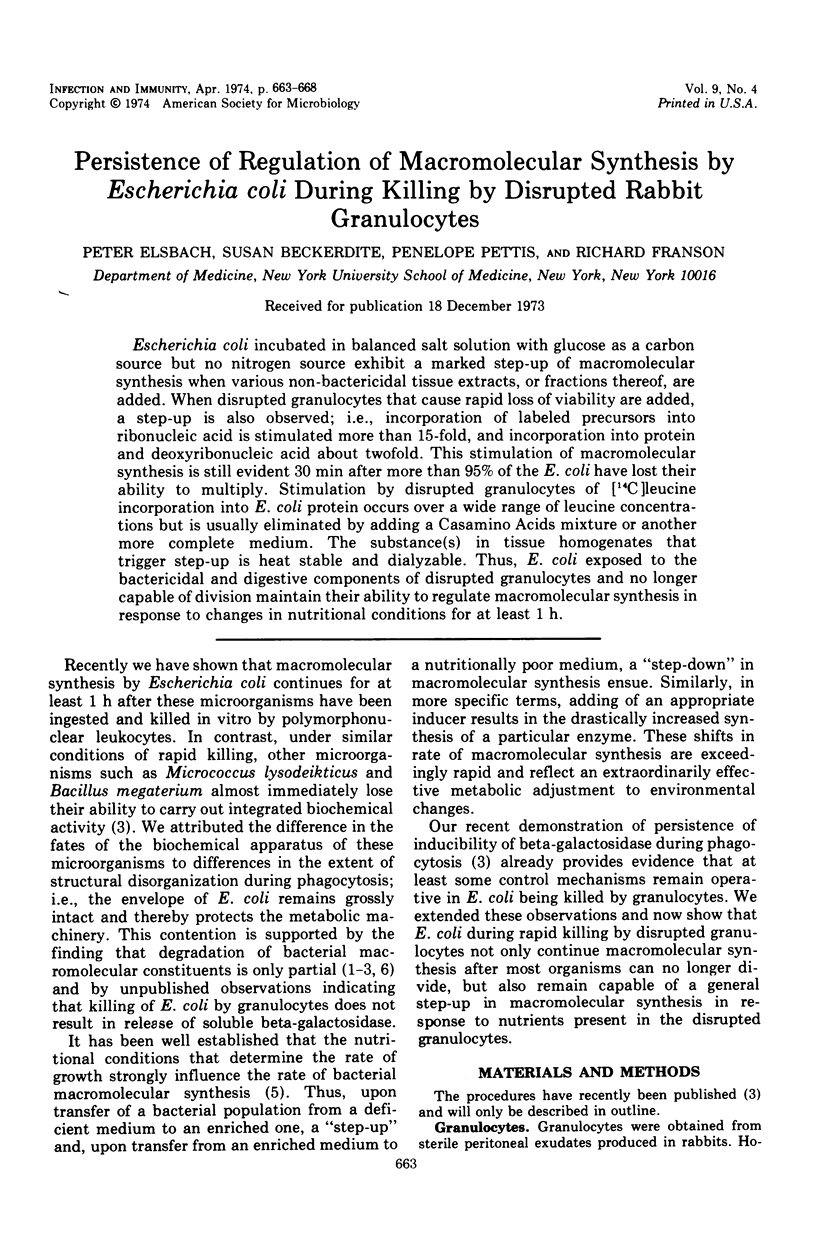
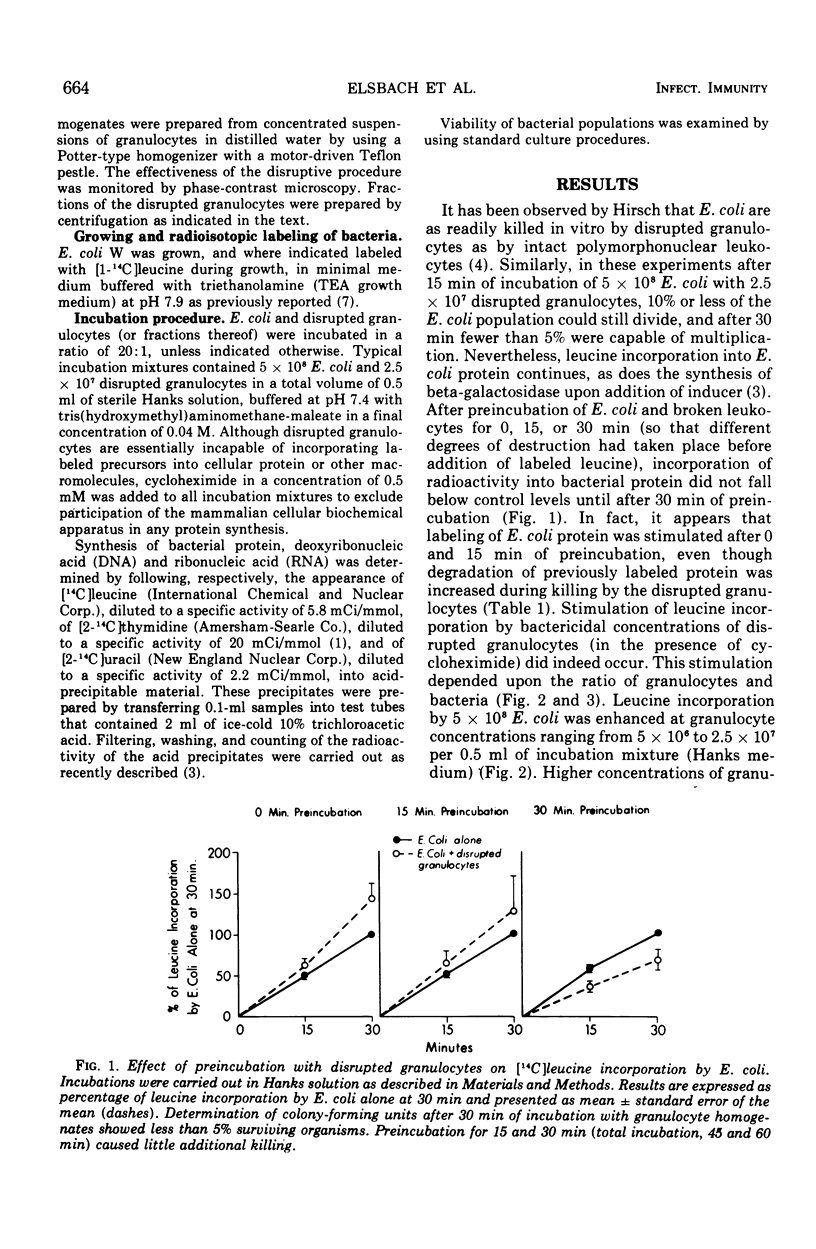
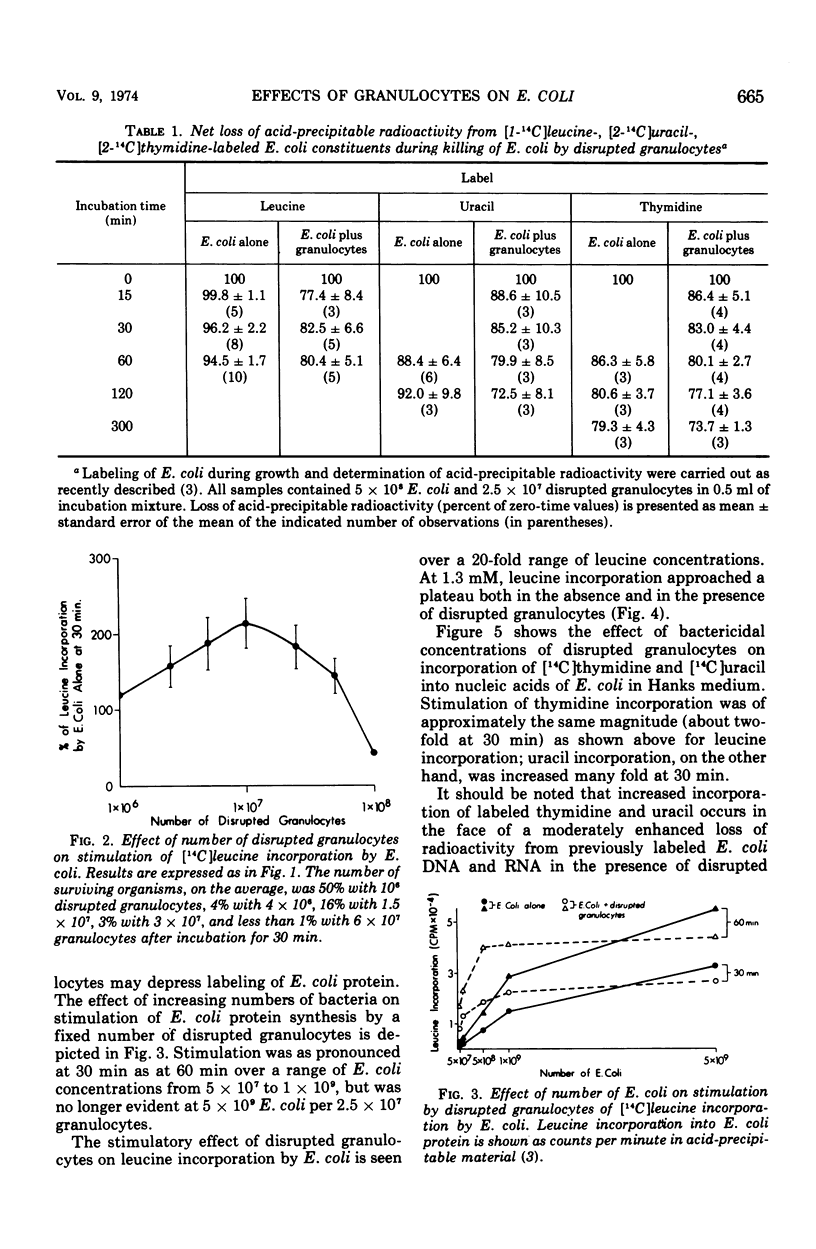
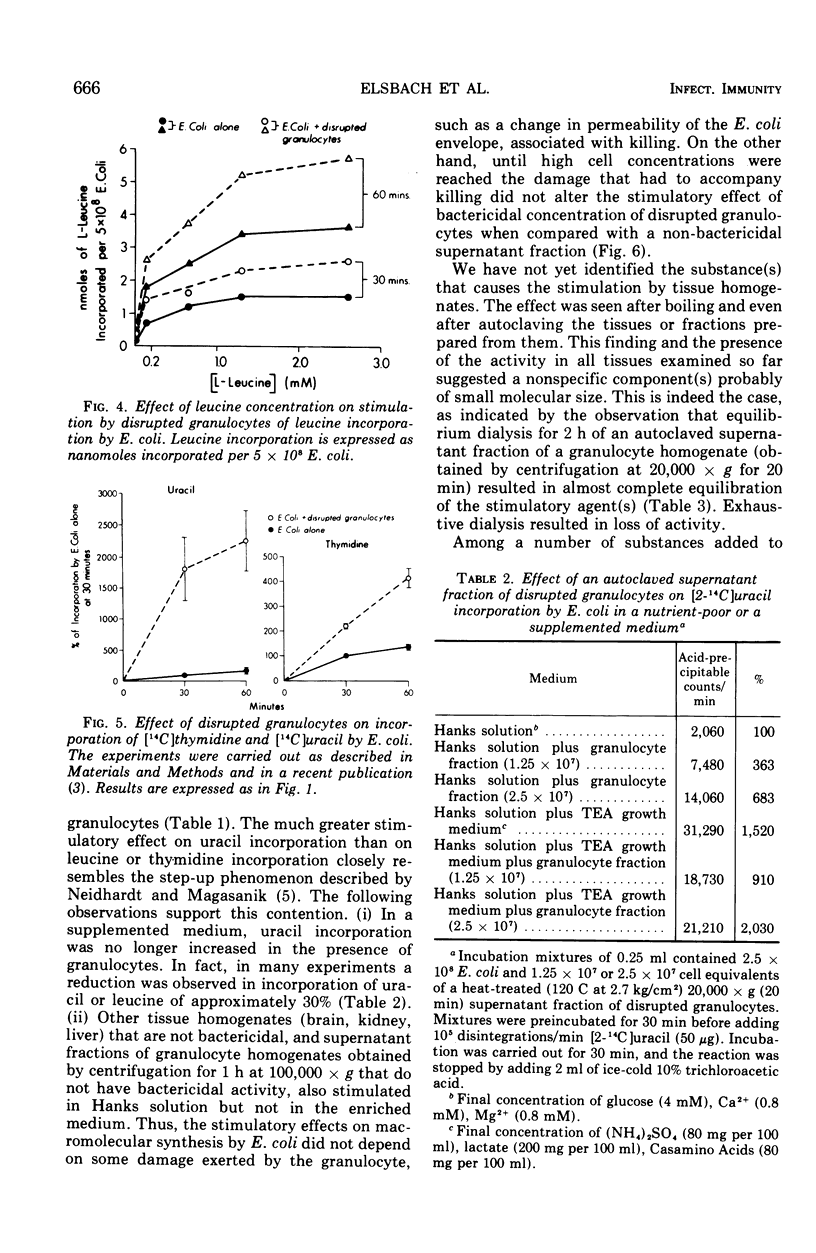
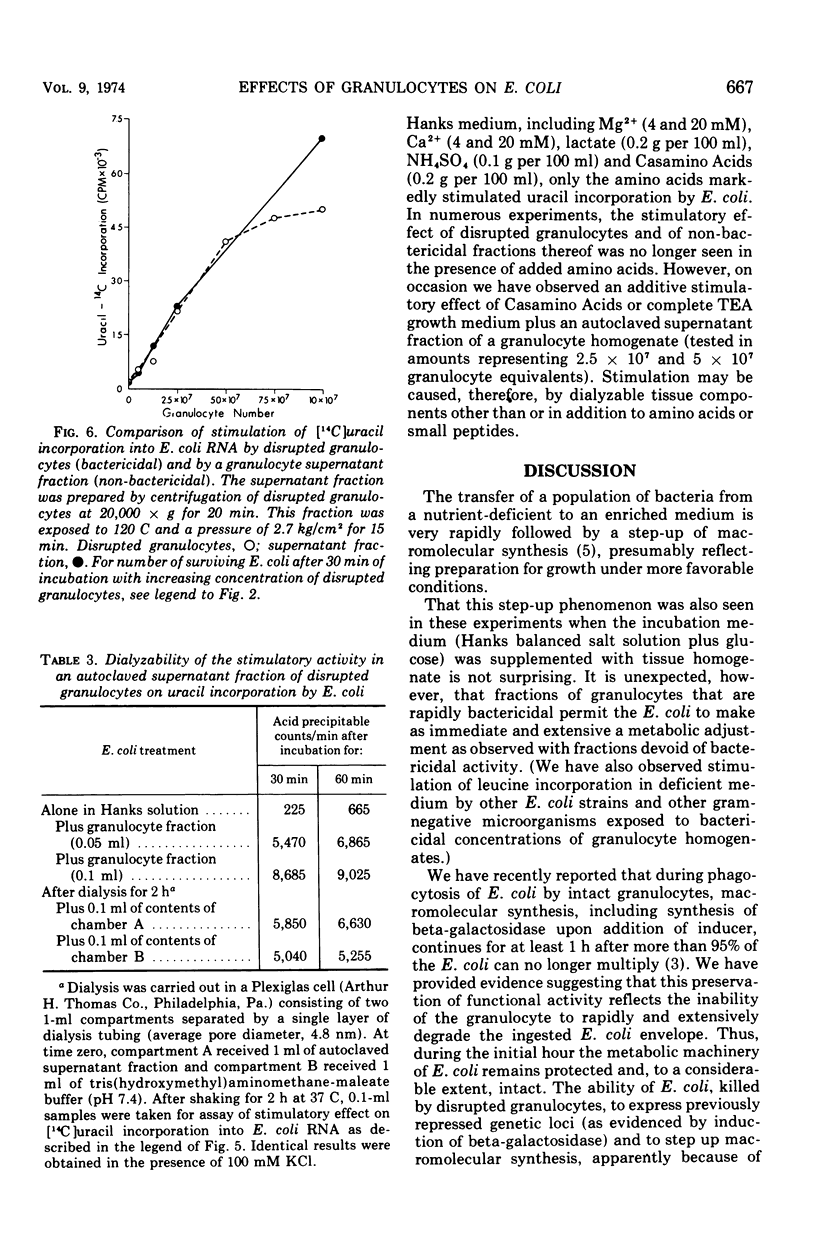
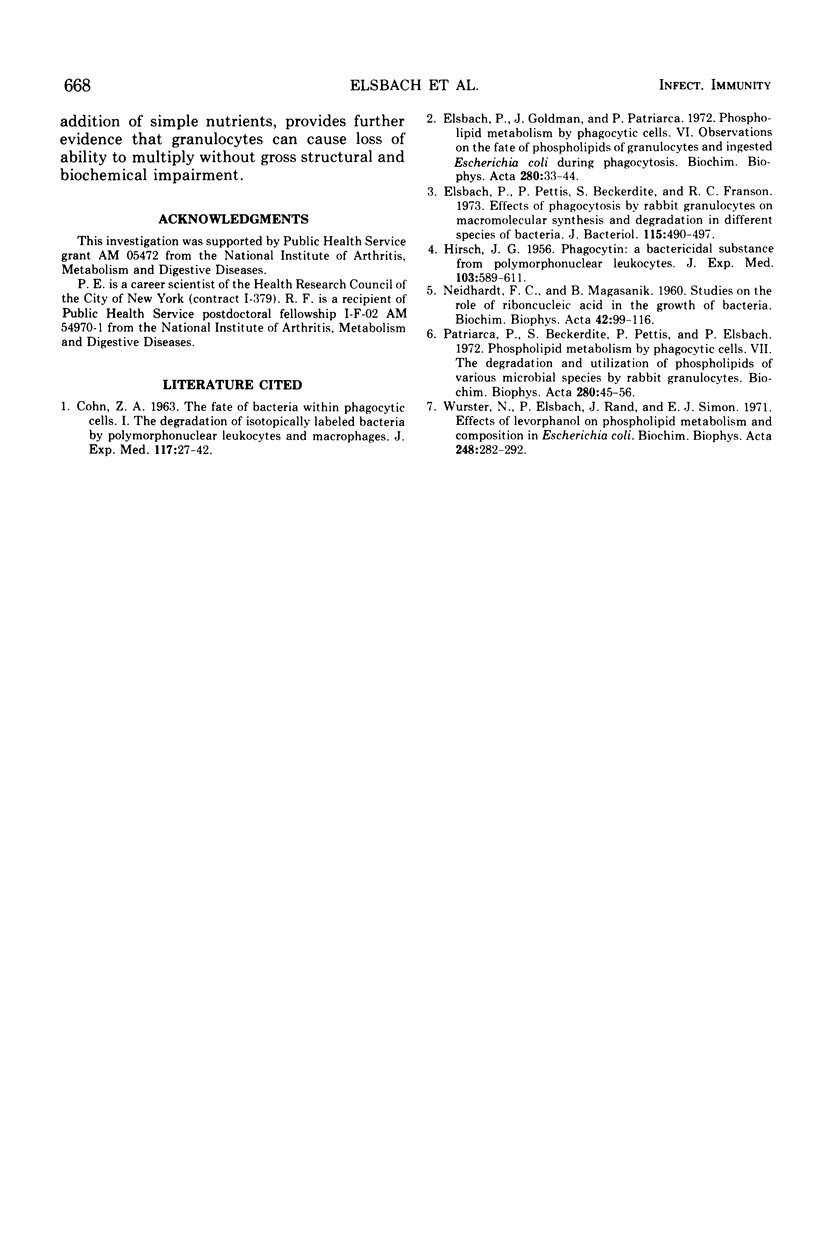
Selected References
These references are in PubMed. This may not be the complete list of references from this article.
- COHN Z. A. The fate of bacteria within phagocytic cells. I. The degradation of isotopically labeled bacteria by polymorphonuclear leucocytes and macrophages. J Exp Med. 1963 Jan 1;117:27–42. doi: 10.1084/jem.117.1.27. [DOI] [PMC free article] [PubMed] [Google Scholar]
- Elsbach P., Goldman J., Patriarca P. Phospholipid metabolism by phagocytic cells. VI. Observations on the fate of phospholipids of granulocytes and ingested Escherichia coli during phagocytosis. Biochim Biophys Acta. 1972 Sep 7;280(1):33–44. [PubMed] [Google Scholar]
- Elsbach P., Pettis P., Beckerdite S., Franson R. Effects of phagocytosis by rabbit granulocytes on macromolecular synthesis and degradation in different species of bacteria. J Bacteriol. 1973 Aug;115(2):490–497. doi: 10.1128/jb.115.2.490-497.1973. [DOI] [PMC free article] [PubMed] [Google Scholar]
- HIRSCH J. G. Phagocytin: a bactericidal substance from polymorphonuclear leucocytes. J Exp Med. 1956 May 1;103(5):589–611. doi: 10.1084/jem.103.5.589. [DOI] [PMC free article] [PubMed] [Google Scholar]
- NEIDHARDT F. C., MAGASANIK B. Studies on the role of ribonucleic acid in the growth of bacteria. Biochim Biophys Acta. 1960 Jul 29;42:99–116. doi: 10.1016/0006-3002(60)90757-5. [DOI] [PubMed] [Google Scholar]
- Patriarca P., Beckerdite S., Pettis P., Elsbach P. Phospholipid metabolism by phagocytic cells. VII. The degradation and utilization of phospholipids of various microbial species by rabbit granulocytes. Biochim Biophys Acta. 1972 Sep 7;280(1):45–56. [PubMed] [Google Scholar]
- Wurster N., Elsbach P., Rand J., Simon E. J. Effects of levorphanol on phospholipid metabolism and composition in Escherichia coli. Biochim Biophys Acta. 1971 Nov 5;248(2):282–292. doi: 10.1016/0005-2760(71)90016-6. [DOI] [PubMed] [Google Scholar]


